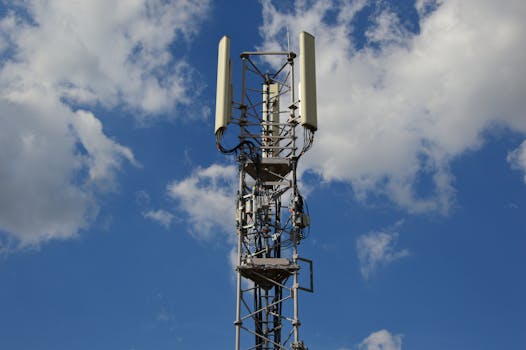
GEO satellites are a type of artificial satellite that orbits the Earth at an altitude of approximately 35,786 kilometers, which is the same distance as the Earth’s equatorial radius. This unique orbit allows GEO satellites to remain stationary relative to a fixed point on the Earth’s surface, making them ideal for a variety of applications.
The focus keyword GEO satellites is used to describe a type of satellite that has been in use for decades, providing a wide range of services including television broadcasting, internet connectivity, and mobile communications. GEO satellites are often used for telecommunications purposes, as they can provide a high-gain antenna that can transmit signals to a specific region on the Earth’s surface.
One of the main advantages of GEO satellites is their ability to provide a wide range of services to a large number of users. They are often used for television broadcasting, as they can transmit signals to a wide area, allowing for the broadcast of programs to a large audience. Additionally, GEO satellites are used for internet connectivity, providing access to remote areas where traditional internet infrastructure may not be available.
In addition to their use in telecommunications, GEO satellites are also used for a variety of other applications, including weather forecasting, Earth observation, and navigation. They are often equipped with specialized instruments, such as cameras and sensors, that allow them to collect data on the Earth’s weather patterns, ocean currents, and other phenomena.
The technology used in GEO satellites is highly advanced, with many satellites equipped with sophisticated instruments and systems. They are often powered by solar panels, which provide the necessary energy to operate the satellite’s systems. Additionally, GEO satellites are equipped with propulsion systems, which allow them to maintain their orbit and make adjustments as necessary.
In terms of applications, GEO satellites are used in a variety of fields, including telecommunications, weather forecasting, and Earth observation. They are also used for navigation, providing location information and timing signals to a wide range of users. The use of GEO satellites has become increasingly important in modern society, as they provide a wide range of services that are essential to many aspects of daily life.
GEO satellites have also played a crucial role in the development of modern telecommunications. They have enabled the widespread use of mobile phones, providing connectivity to remote areas and allowing for the transmission of data and voice communications. Additionally, GEO satellites have enabled the development of modern television broadcasting, providing the ability to transmit signals to a wide area and reach a large audience.
The future of GEO satellites is expected to be shaped by advances in technology and the increasing demand for satellite-based services. As the demand for satellite-based services continues to grow, it is likely that the use of GEO satellites will become even more widespread. Additionally, the development of new technologies, such as advanced propulsion systems and more efficient instruments, is expected to improve the performance and capabilities of GEO satellites.
In conclusion, GEO satellites are a crucial part of modern telecommunications, providing a wide range of services including television broadcasting, internet connectivity, and mobile communications. Their unique orbit and advanced technology make them ideal for a variety of applications, and their use is expected to continue to grow in the future.
The development of GEO satellites has been driven by the need for reliable and efficient telecommunications services. As the demand for satellite-based services continues to grow, it is likely that the use of GEO satellites will become even more widespread. The use of GEO satellites has also enabled the development of new technologies, such as advanced propulsion systems and more efficient instruments, which are expected to improve the performance and capabilities of GEO satellites.
GEO satellites are an essential part of modern society, providing a wide range of services that are essential to many aspects of daily life. Their use is expected to continue to grow in the future, driven by advances in technology and the increasing demand for satellite-based services.
How GEO Satellites Work
GEO satellites work by orbiting the Earth at an altitude of approximately 35,786 kilometers, which is the same distance as the Earth’s equatorial radius. This unique orbit allows GEO satellites to remain stationary relative to a fixed point on the Earth’s surface, making them ideal for a variety of applications.
The orbit of a GEO satellite is not a perfect circle, but rather an ellipse that is slightly tilted relative to the Earth’s equator. This tilt allows the satellite to maintain its orbit and make adjustments as necessary. The satellite’s orbit is also influenced by the gravitational pull of the Earth and the Sun, which can cause the satellite to drift slightly over time.
To maintain their orbit, GEO satellites are equipped with propulsion systems, which allow them to make adjustments as necessary. These propulsion systems are typically powered by solar panels, which provide the necessary energy to operate the satellite’s systems. Additionally, GEO satellites are equipped with attitude control systems, which allow them to maintain their orientation and stability in space.
Applications of GEO Satellites
GEO satellites have a wide range of applications, including telecommunications, weather forecasting, Earth observation, and navigation. They are often used for television broadcasting, providing the ability to transmit signals to a wide area and reach a large audience.
In addition to their use in telecommunications, GEO satellites are also used for weather forecasting, providing data on the Earth’s weather patterns and atmospheric conditions. They are equipped with specialized instruments, such as cameras and sensors, that allow them to collect data on the Earth’s weather patterns, ocean currents, and other phenomena.
GEO satellites are also used for Earth observation, providing data on the Earth’s surface and atmospheric conditions. They are equipped with specialized instruments, such as cameras and sensors, that allow them to collect data on the Earth’s surface, including vegetation, soil moisture, and other phenomena.
